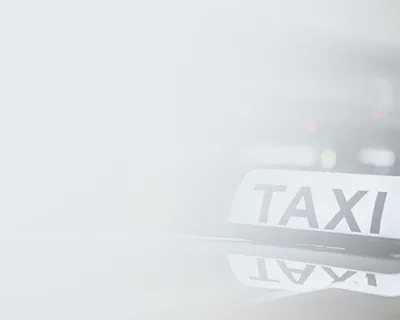

25 locations in Poland
Efficient verification process without any unnecessary delays
x3 number of verified drivers
Uber is a technology application connecting passengers and drivers that has revolutionized the way people travel. Since its inception in 2009, Uber has experienced exponential growth, expanding its operations to numerous cities worldwide. Uber operates in more than 10,000 cities across more than 71 countries, making it one of the largest ride-hailing platforms globally.
In Poland, Uber is available in 25 locations: Warszawa, Poznań, Krakow, Wrocław, Łódź, Trójmiasto, Aglomeracja Śląska, Lublin, Szczecin, Bydgoszcz, Rzeszów, Radom, Toruń, Kielce, Białystok, Częstochowa, Olsztyn, Płock, Koszalin, Opole, Legnica, Zielona Góra, Gorzów Wielkopolski, Elbląg and Kalisz.

Challenge
Uber's seamless integration of technology and transportation has changed urban mobility, and provided users with convenient and efficient ways of ordering rides. Uber's presence in various cities has not only transformed the way people travel, but has also had a significant economic impact. The platform has created earning opportunities for countless people, enabling them to become independent drivers in cooperation with the platform.
In Poland as of 2020, Uber is licensed as a passenger transportation intermediary, and only works with partners who hold a taxi license. The company continuously invests in safety features and initiatives to provide a secure experience for both passengers and drivers. This includes driver background checks, GPS tracking, and in-app emergency assistance.
The driver verification program is a part of Uber's ongoing work to raise safety standards on its platform and across the industry, as well as complementing the real-time verification technology that was rolled out in 2019. To use the application, the person driving the vehicle may be asked to take a selfie photo, which will be compared with the photo added in the system at the time of registration.
Before registering on the Uber platform, any driver who wants to escort passengers must meet a number of requirements of the Road Transport Law. Among other things, it is necessary to show documents to Uber: an ID card or passport, and a driver's license (valid for at least a year). In addition, Uber verifies certificates confirming no criminal record and successfully passing medical and psychological checks. Drivers must have their own taxi license, or work with another entrepreneur under their license.
Previously, the documents were manually verified by Uber employees, and via the application using AI algorithms. The old method had two problems: it was time-consuming, and it did not guarantee protection against sophisticated document forgery.
Solution
In mid-December 2022, Uber became the first company in Poland to launch a personal driver verification process. In November 2022, they established the first Verification Center in Warsaw. This office serves as a dedicated hub where drivers submit their driver’s licenses and identification documents for thorough verification. If a driver doesn’t come to the office and/or does not pass the document verification procedure, their access to the account is blocked, so they cannot perform rides until they present the documents in person.
Since the opening of the first Verification Center, Uber has expanded the map and opened two more offices in Krakow and Poznan.
In November 2022, Uber was approached by representatives of Regula’s Polish distributor – Korporacja Wschód offering to test the equipment. After a successful pilot phase, Korporacja Wschód and Regula equipped Uber offices with Regula 70X9 document readers, featuring a built-in computer and USB Multi Touch monitor, while forensic experts from Korporacja Wschód provided special training on how to use them. The devices employ state-of-the-art technologies such as automatic document type identification and optical character recognition (OCR), and they obtain data from MRZs, RFID chips, and barcodes for further comparison of the text and graphic data. Also, every document reader is equipped with Automatic Authenticity Control technology, which swiftly assesses the integrity of the provided documents, detecting any signs of forgery or alteration. All of the above features, together with integrated light sources, significantly reduce the risk of hiring fraudulent potential drivers.
The current workflow carried out by Uber employees is as follows:
- Step 1. Compare the documents provided by the driver with the documents uploaded in the Uber application.
- Step 2. Review the Background Check Certificate.
- Step 3. Verify the authenticity of the passport/ID and driver’s license using the Regula 70X9 reader.
- Step 4. Take a profile picture of the driver.
- Step 5. Finalize verification in the system: input the data, and upload the document and profile picture.
Result
Uber is pleased with the results, and sees a real change in the verification process. They appreciated how simple the installation was, and also about the training and support their agents got on the equipment. Now, the verification process is very smooth, and proceeds without unnecessary delays.
The solution was also presented to the public at a press conference launching the physical verification program.
Thanks to the implementation of the Regula 70X9 reader, the total number of verified drivers has increased. At the beginning, one office could check about two hundred drivers a week — now this number has tripled.
The Automatic Authenticity Control module integrated into the readers effectively assists in revealing forged documents. Since July 2023, more than 30 document forgeries have been detected.

The process of personally vetting drivers has been, and continues to be, a major logistical challenge, but we believe our efforts will help improve safety in transit. Thanks to the Regula device, the first stage went very smoothly for us. This process, although lengthy, is certainly effective.
—Marcin Konrad Moczyrog, Director and Global Manager at Uber Rides, Central & Eastern Europe






